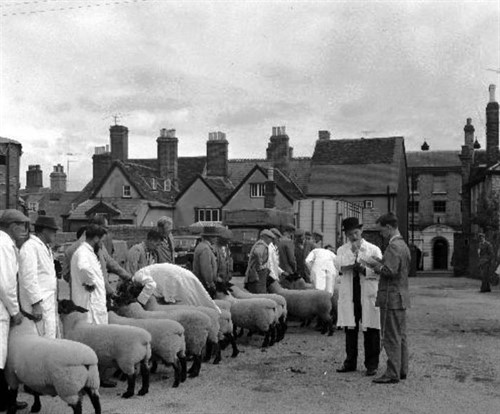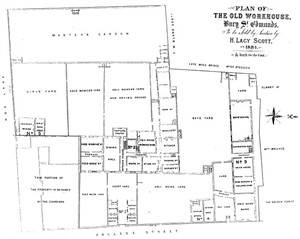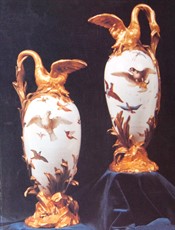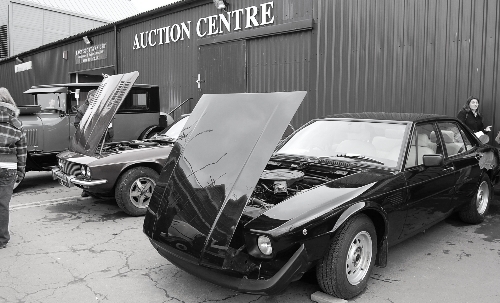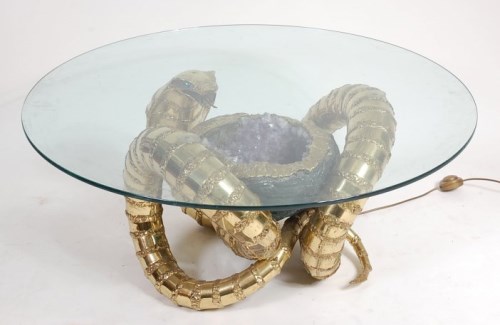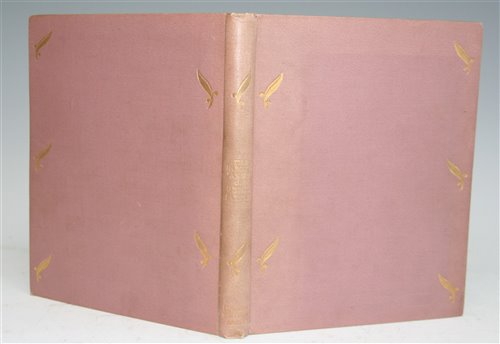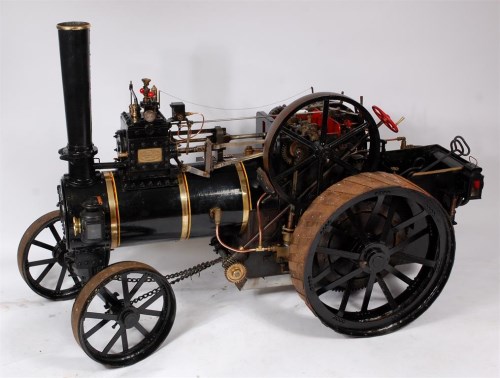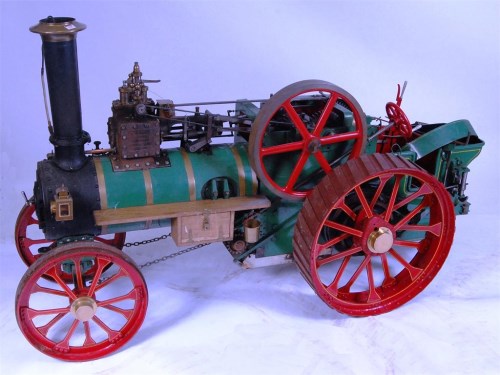From Fat Sows to Fine Art
We were thrilled to celebrate our 150th anniversary back in 2019, but that century and a half has seen many changes to Lacy Scott & Knight as an auction centre.
The auction side of the business was established in 1869 by Henry Lacy Scott, and we have been an integral part of historic Bury St Edmunds ever since. The company was later enlarged to Lacy Scott & Sons, and then further expanded when we merged with Knight's estate agents of Stowmarket in 1997. We are now one of the largest salerooms in the East of England, and hold a diverse range of specialist and general sales throughout the year. However, our early history was less Fine Art and more Fat Sows, as befits Auctioneers of a regional market town!
The first mention of the firm was in the Bury Free Press of 9th July 1869 in the form of an announcement; "Mr Henry Lacy Scott begs to advise as to his setting up in business as an Auctioneer and Valuer, the office being at No.3 Guildhall Street".
Within a few years, Henry Lacy Scott founded a livestock market behind the Market Tavern (now Gym Bar) on Risbygate Street in 1874. It soon became the vibrant heart of the town; bustling with dealers, auctioneers, farmers, and drovers, as well as children who loved to see the farm animals. Henry, who was also a borough councillor and twice mayor, was joined by his sons Archibald and Reginald around the turn of the century before dying in 1904. The cattle market gradually expanded, briefly interrupted by WWI in which Reginald served. In the 1920s & '30s, Archibald's own sons Henry and John (who our two salerooms are named after), joined the firm.
The excitement of market day was immortalised in literature when Adrian Bell (father of MP & journalist Martin) described his visit there while training to be a farmer in the 1920s;
"All the while the air was filled with the lowing of cattle, the slithering of hoofs, pigs quarrelling, and bells ringing. The large pigs seemed indifferent to their surroundings, sleeping until the auctioneer came to them and the crowd poked them to sudden panic. Each, as sold, received an indigo blue hieroglyph upon its back, and was soon once more in deep slumber… Everywhere sticks waved; one of the undertones of the place was the continual tattoo of them pattering upon hides. Men stood conferring solemnly with their hands upon a bullock's back, as though it were a sacred relic they were swearing by, or raised themselves and stood on the rails to get a comprehensive view of a particular penful." Corduroy, Published 1930.
Lacy Scott & Sons were the last remaining livestock auctioneers in the county until the BSE crisis of the late 1990s forced the complete closure of the cattle market. Despite weathering 'swine fever' back in 1922 and 'fowl plague' in the 1960s, times had changed and the cattle market was no longer seen as such a fundamental part of the town. Luckily, by that time we were already well established as auctioneers of art and antiques, however it is still possible to see remnants of our cattle market history within the current auction centre.
We were diversifying from early on though; an advertisement in the Bury & Norwich Post for January 1877 states "Lacy Scott will sell by auction at Bury market, a kennel of sporting dogs including Retrievers, Laverack Setters and Wood Spaniels, the property of a gentleman who has given up shooting"!
We even sold the old Bury St Edmunds workhouse, which was situated on College Street, after its closure in the 1880s.
While the Suffolk Free Press of July 1909 included this article, "Messrs Lacy Scott will sell by auction on instructions from Mr E.Starkie Bence at the Angel Hotel in Bury. 200 dozen bottles of rare choice old wine which will include 70 dozen pert from the vintage 1842-1847, 1854-1863 and 1877, 62 dozen fine old Madeira sherry." An early pre-cursor of our annual Wine, Port & Spirits auctions!
We continued to grow and diversify through the turbulent 20th century, despite the wider turmoil of war, economic depression and political unrest. However, there were some issues as seen in this Bury Free Press article from 1940; "Mr. H. Lacy Scott… had short supplies of fat stock, including 171 sheep, 84 pigs, which were taken over by the Ministry of Food. Store pigs sold to 50s. A larger supply of poultry met a good demand". Archibald was made County Chairman under the Ministry of Food during WWII and operated from No.3 Hatter Street, where Lacy Scott & Sons had moved to in 1934. Both the younger Lacy Scott's, Henry and John, served in the Second World War.
By the 1950s we were also holding farm auctions, and selling chattels and ex-military vehicles, and had expanded the estate agency side of the business. The 1960s and '70s witnessed a growth in the art and antiques market, as well as general economic prosperity, so we were well placed to make a name for ourselves in this area. It is no coincidence that many of Lovejoy's adventures were set in and around Bury St Edmunds which had a thriving antiques scene at the time!
It was during the 1970s that we began our now legendary Toys & Models auctions under Peter Crichton (former partner and father of current Fine Art manager Edward Crichton). The sales began, almost by chance, off the back of a one-off collection of Dinky and Corgi models. This proved so popular, and indicated a rich and previously untapped seam, that we established regular sales which continue to be the largest one-day auction of their kind in the UK.
The second half of the last century also saw us establish concrete roots in the town with the building of the current Auction Centre on Risbygate Street in 1981 (although at this time we still held offices at 1A Angel Hill). Prior to this, antiques auctions were held in the Corn Exchange, the Athenaeum (from 1969), on site if selling the farm/house, and at the Angel Hotel. We also held sales at Everards Hotel which closed in 1987 and is now occupied by Pizza Hut.
Our last link with the Lacy Scott family was severed in 1994 when John Lacy Scott, the last remaining Lacy Scott partner (who our collectables room is named after) died. His brother Henry Lacy Scott (of our furniture room fame) having passed away in 1984. John Lacy Scott's widow Marian (known as Dan) passed away in 2016 at the age of 91.
Over the years Lacy Scott & Knight has achieved a number of record-breaking and notable prices, including setting a UK provincial auction record in 1999 when we sold a pair of Sevres vases for £500,000. This record has since been broken numerous times by other provincial auctioneers as the power of the internet has allowed us to compete with major London auction houses. Recent prices of note include £130,000 achieved for a Chinese Qianlong Period carved zitan Ruyi sceptre, £41,000 for a Marklin model of Holborn station, £23,000 for a Samuel Cooper portrait miniature, and a Chinese cloisonné champlevé enamel bowl, which sold for £72,000.
We have also been lucky enough to sell some incredibly interesting and newsworthy items - not least of which was a 19th century shawl which has since helped to prove the identity of Jack the Ripper (allegedly)! The bloodstained shawl was brought into us in 2007 by a descendant of an East End policeman who had a macabre family story to pass on. DNA testing after the auction linked the shawl to canonical victim No.4 Catherine Eddowes, and a Polish immigrant Aaron Kosminski who was confined to an asylum soon after the murders.
Another remarkable find which hit the news was a barn full of modern classic cars which had lain untouched for at least two decades. I think it's fair to say that Edward Crichton, who was shown the cars during a routine house contents valuation, looks back on that day as his career highlight! The 10 cars which included rare Bentleys, Maserati's and De Tomaso's ensured our busiest sale day ever and achieved almost £200,000. After another successful Classic Cars & Motorcycles auction in 2021, these sales have now been re-introduced as an annual summer fixture on our calendar.
Other notable collections have included the John Clibbon tinplate toys collection, the personal collection and studio works of legendary surrealist photographer Angus McBean, and a stunning collection of Andrew Grima bespoke jewellery.
Since the turn of the century, there have been many changes at the Auction Centre, both structurally and procedurally. We have expanded in all directions – our sales calendar now includes over 40 diverse auctions per year, we have extended our salerooms, our team and our global reach.
2017 saw us expand our premises to incorporate extra offices, a new reception and cataloguing rooms. Within a month of our grand opening we were pleased to host the BBCs Antiques Road Trip - and even more pleased to be the auctioneers to break the programmes record by achieving £20,000 for a rare circa 1860s French Adolphe Bertsch Chambre Automatique sub-miniature camera!
The most revolutionary change has been in the way that the internet has affected our business. We were early adopters of live bidding and now have an ever-growing global clientele; it is intriguing to wonder what Henry Lacy Scott would have made of a person in China or Australia seeing our catalogue online, watching the auction and bidding on lots as if in the room! We removed all fees from our live bidding service during the Covid pandemic lockdowns and offer global shipping to our buyers - all of which has undoubtedly enhanced our auctions.
As we move further into the 2020s, we look forward to seeing what the future may bring...

